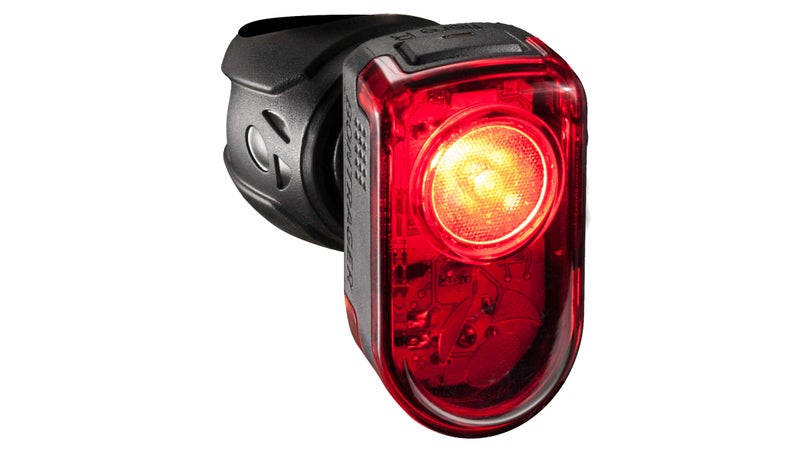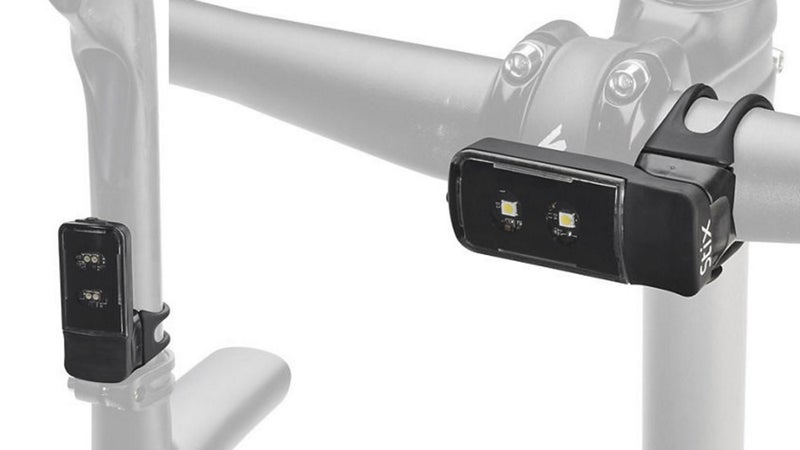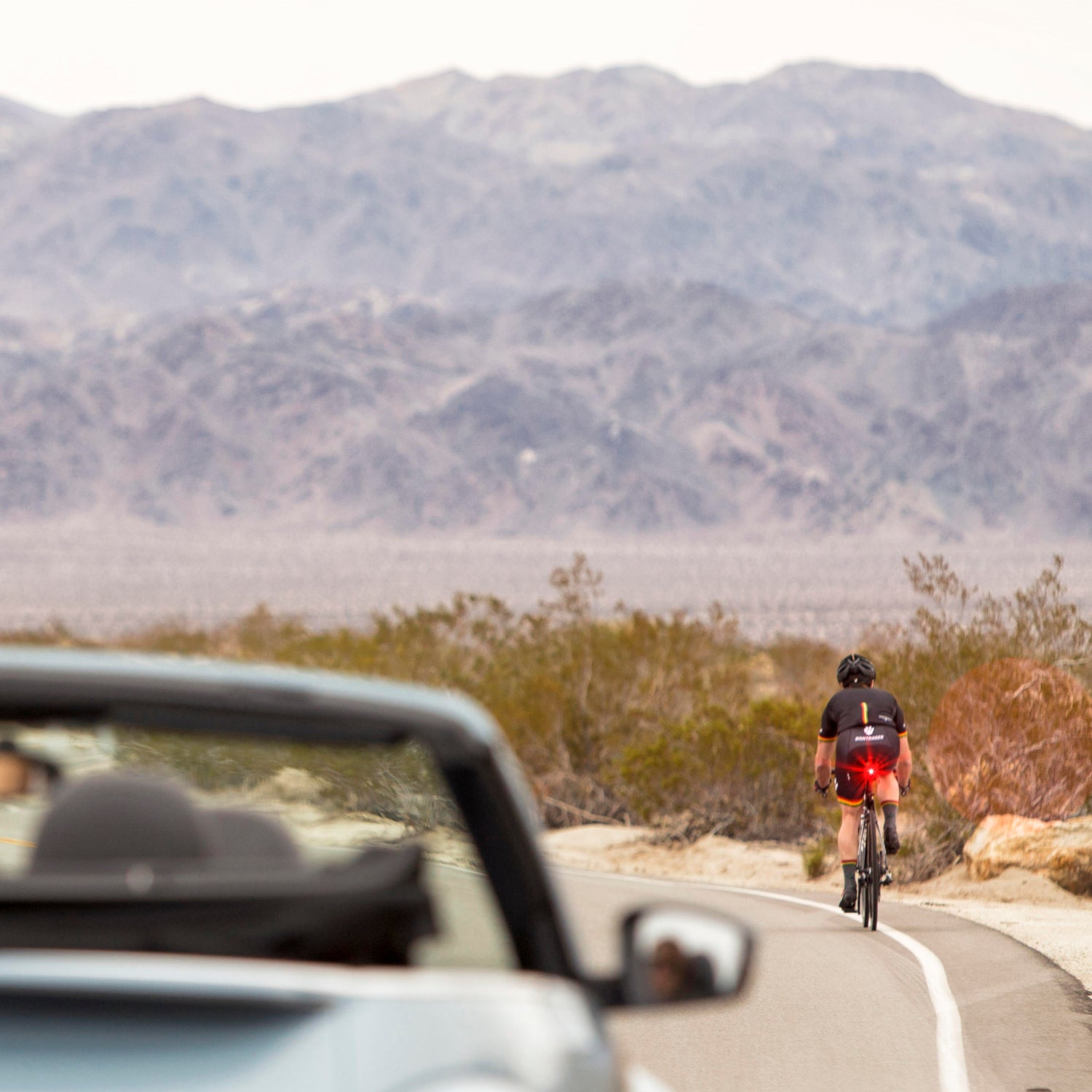It used to be that blinker lights on road bikes in the daylight were the domain of old men and the terminally nervous. But thanks to the efforts of two of the biggest players in the industry, Specialized and Bontrager (which is under the Trek umbrella), lights are becoming de rigueur for cyclists at any time of day.
Of course, lots of companies have been pushing excellent lights for a long time, including Knog with its rugged  and NiteRider with its innovate  that projects laser lanes. But the interest, and resources, of big companies should get even more users on board. 
The thinking is simple: by improving a cyclistÔÇÖs visibility, lights decrease the riderÔÇÖs chances of getting hit by a car. This of course makes perfect sense at nightÔÇöand lights on bicycles are required for dusk or nighttime riding in all 50 states. But the thereÔÇÖs no mandate for the use of daytime running lights (DRL) for cyclists, largely because thereÔÇÖs been little research on their effectiveness.
The┬áevidence we do have, however, is persuasive. According to traffic statistics out of the United Kingdom, around 80 percent of cycling accidents ÔÇösimilarly high numbers are reported in research across Europe. And the League of American Bicyclists recently showed that 40 percent of fatal bike accidents are a result of . The┬ápeer-reviewed data to support the effectiveness of┬áDRLs┬áfor bikes is scant, but one 2005 Danish study┬áof 2,000 cyclists claimed that all-day lights reduced crashes by .
In motor vehicles, the effectiveness of┬ádaytime running lights┬áhas been demonstrated repeatedly, with the U.S. Department of Transportation showing that their use reduced opposite-direction, daytime collisions among cars by┬á. The decrease in motorcycle-car collisions was even more startling: 26 percent lower when motorcycles used lights. ÔÇťIf you take a look at motorcycles, theyÔÇÖve got lights on all day long. Bicycles should be no different. People should be able to see you all the time,ÔÇŁ says John Burke, president of Trek Bicycles.
Beyond┬ávisibility, DRLs could also protect you legally in case of an accident. If you have a collision after dark and youÔÇÖre not using a light, itÔÇÖs no matter the circumstances. So running lights demonstrate that you are taking precautions to avoid an accident. ÔÇťAnytime a cyclist can say they were doing everything right, such as riding in a bike lane, wearing bright colored clothing, bright helmet, reflective gear, it decreases the chances of blame or fault being apportioned to the rider,ÔÇŁ says Megan Hottman, a Golden, Colorado-based attorney specializing in cyclistsÔÇÖ rights through her company . ÔÇťSo the addition of blinking lights in the daytime helps bolster the case for the cyclist.ÔÇŁ Hottman cautions that daytime lights wonÔÇÖt determine the outcome of any case,┬ábut they could help.┬á
With so many distractions for drivers these days (think: built-in computer systems, in-vehicle TVs, and ubiquitous cell phones), even the possibility that a $60 or less investment could keep you safer should make full-time running lights a no-brainer for cyclists. ÔÇťThese days, I always ride with lights during the day, and I┬áinsist that all loved ones do the same,ÔÇŁ says Michael Browne, brand manager for Bontrager. ÔÇťA helmet is a great thing. But not getting hit by a car is even better.ÔÇŁ
Bontrager Flare R ($60)

The ┬átaillight is said to be visible from over a mile away┬áduring the day. The 65-lumen CREE LED provides 270-degree visibility and will last 4.5 hours on the flashing daytime mode, with run times up to 23 hours in the least powerful of the five settings. ThereÔÇÖs also a battery-save mode that kicks in when the charge drops below five┬ápercent so that you can get home with at least a little bit of light out back. The light straps on with a stretchy, rubberized quick-connect bracket, which also makes it easy to pull it off and bring it inside to charge. ItÔÇÖs not the trimmest light out there, and weÔÇÖve had some durability issues with the mountain bracket coming loose. However, itÔÇÖs definitely the brightest unit weÔÇÖve found.
Specialized Stix Sport Combo ($55)

Specialized has a very good taillight, , that competes with BontragerÔÇÖs Flare R, but itÔÇÖs the companyÔÇÖs trim┬ánew Stix lights that we really love┬áfor their ease of use and low cost. The ┬áincludes a 70-lumen headlight that gets 1.5 hours on steady-burn full power and a 14-lumen taillight that runs for 2.8 hours on max. Both units have rubberized mounting bands and are so trim that they tuck inconspicuously on your handlebars or behind the seat post. Specialized also has a┬áwide range of mounting accessories (bolt-on saddle, leg band, rack, headset spacer, and even aero seat post) for the USB-rechargeable lights. And though they may not be as bright as the Flux or the Flare R, the Stix eradicates┬áany excuse for not using a light with their low cost and diminutive size. Down the road, we hope Specialized offers a front and rear combo pack of the brighter, Comp-level Stix.


